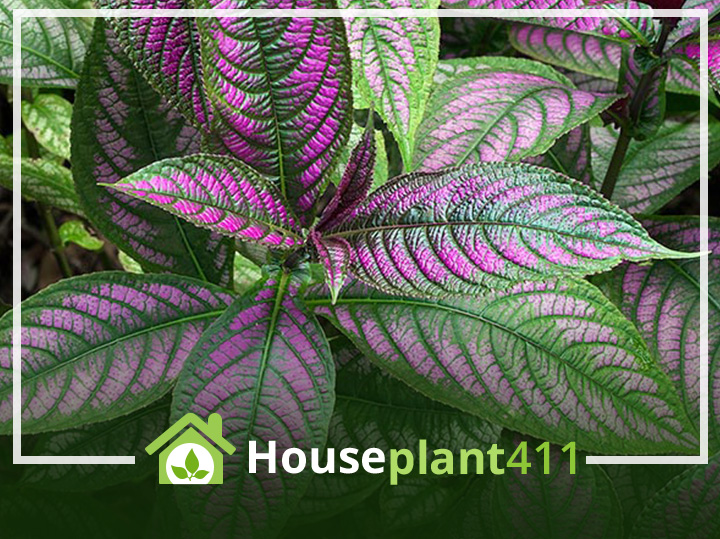A Persian Shield plant, sometimes called a Royal Purple plant, is a tropical, fast growing plant that loves high humidity and warm temperatures. It has dark green, iridescent leaves with metallic, light purple stripes. Originally from Myanmar (Burma) not Persia, it gets the name Persian Shield because the leaves resemble little, feudal battle shields. The pale purple flowers of a Persian Shield plant can’t compare to the beautiful leaves. This plant can be planted outdoors, but does even better as a potted, indoor plant.
Plant Care
Light
A Persian Shield plant needs bright indirect light to maintain the vibrant colors in its leaves; but no direct afternoon sun or the leaves may be damaged. The plant becomes thin and leggy when there is not enough light.
Water
Keep the soil barely moist, water when the top few inches of soil are dry. Spotting on the leaves occurs if cold water splashes on them. Water less in the fall and winter when the plant is not actively growing.
Fertilizer
Do not fertilize a Persian Shield plant during the fall and winter. In the spring and summer, when the plant is actively growing, feed every two weeks with a balanced plant food diluted to 1/2 the recommended strength.
Temperature
These plants like to be warm. Place them in an area where the temperature is always above 60°F (15.6°C).
Humidity
Persian Shield plants require high humidity. Leaves dry up and fall off in low humidity. You can mist the leaves to increase the humidity, but use rain water or distilled water. Misting the plant with water containing chemicals such as chlorine or water that has passed through a softener puts marks on the leaves. If the air in your home is very dry, I’d recommend placing your Persian Shield plant on a wet pebble tray. Be sure the plant is sitting on the pebbles and not in the water.
Flowering
A Persian Shield plant has beautiful leaves; the flowers, however, are rather inconsequential. Put the plant outside for the summer to encourage flower spikes, but be sure to bring it indoors before the temperature drops below 60°F (15.6°C)
Pests
Aphids and whitefly: Learn how to identify and treat plant pests in the Glossary of the website.
Diseases
This plant is fairly disease resistant. The main problem is root- rot from over watering.
Soil
A Persian Shield plant grows well in a rich soil that drains quickly.
Pot Size
Repot annually when the plant is young. As a Persian Shield plant matures, repot every other year. This is a fast growing plant. If it becomes too large and pruning is not controlling the size, try pruning the roots.
Pruning
Aggressively prune a Persian Shield plant to keep it full and bushy
Propagation
Use 2″-3″ stem tip cuttings to propagate a Persian Shield plant. Take the cuttings from the top of healthy stems just below a leaf node. Learn how to propagate using stem cuttings in the Glossary of the website.
Poisonous Plant Info
A Persian Shield plant is slightly poisonous with a #1 toxicity level.
FAQ
Persian Shield plants require high humidity. When the humidity is too low, leaves dry uo and fall off.
A Persian Shield plant likes bright, indirect but not direct sun. Move your plant out of the direct sun and the leaves will start looking better.

